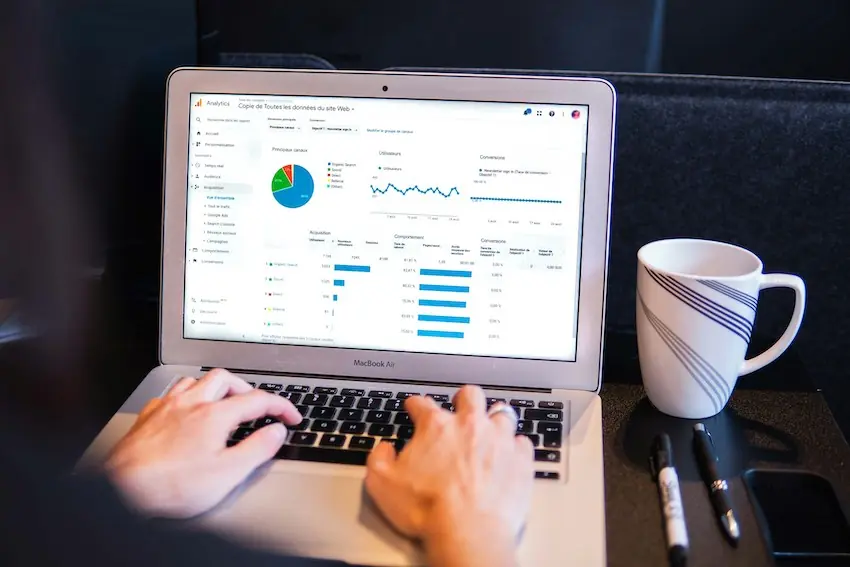ECommerce sellers looking to build a strong brand will soon realize the importance of sales forecasting. Building models to predict even loosely how sales will go over the coming months can prove to be an immense asset to any business. Such information can allow for better planning, whether it’s about ordering more or less inventory or deciding on new investments. Companies that plan ahead better are able to prepare better, whether it means stocking up as demand is set to rise, or trimming down, as sales decrease. In this article, we will explain the ins and outs of eCommerce sales forecasting and how you can get better at it.
What is sales forecasting?
Sales forecasting is the process of making calculated predictions of how much an eCommerce seller is likely to sell over a given period. This is done to ensure that the company doesn’t over- or understock its products. Having too little means losing out on important sales momentum, and having too much means wasting money on storage fees and elsewhere. Regular good sales forecasting can make a massive difference on a company’s overall profit margins and survivability.
Key terms and metrics to know
Demand forecasting
Demand forecasting helps sellers predict future customer demand. This allows them to make informed decisions on inventory management and pricing strategies. Effective demand forecasting involves analyzing historical sales data, market trends, and external factors like seasonality and economic shifts. Using these metrics to predict customer demand not only helps in maintaining the right stock levels, thus reducing carrying costs and minimizing stockouts but also enables more strategic planning for growth.
Revenue forecasting
This process involves estimating future sales and translating those numbers into potential revenue over a specific period. This predictive model empowers businesses to set realistic financial goals, allocate resources efficiently, and make strategic decisions about marketing, product development, and expansions. By incorporating factors such as past sales trends, market conditions, and upcoming promotions, revenue forecasting provides a roadmap for growth and financial stability.

Product life cycle analysis
Understanding the stage of a product in its life cycle (introduction, growth, maturity, or decline) is crucial for accurate sales forecasting in eCommerce. Product life cycle analysis can help sellers anticipate changes in demand based on the maturity of the product. For instance, newer products may see rapid growth, which could fizz out as the product reaches market saturation. By aligning sales strategies with the product life cycle stage, sellers can optimize marketing efforts, adjust pricing, and manage inventory more effectively to maximize profits and minimize losses.
Competitor analysis
Keeping a close eye on competitors is essential for understanding how their pricing, product offerings, marketing strategies, and sales performances can impact your own forecasts. Sellers can use this information to anticipate market shifts, adjust their sales strategies, and identify opportunities for differentiation. By analyzing competitors’ strengths and weaknesses, sellers can forecast demand more accurately and tailor their approaches to capture more market share.

Customer segmentation
Segmenting customers based on demographics, purchasing behavior, and preferences allows sellers to forecast sales with higher precision. By understanding the specific needs and buying patterns of different segments, sellers can tailor their inventory and marketing strategies to meet the expectations of each group. This targeted approach not only improves customer satisfaction and loyalty but also enhances the accuracy of sales forecasts. Sellers can leverage data analytics tools to dive deeper into customer segments, predict future buying behaviors, and adjust their sales tactics accordingly.
Forecasting in online vs. traditional retail
In eCommerce, forecasting has to account for rapid shifts in consumer behavior and trends. These can be influenced by everything from global events to social media. This is very different from traditional retail, which often relies on physical foot traffic data. Online retailers benefit from real-time data tracking, allowing for more responsive and detailed forecasting. This involves analyzing a wide array of factors from global market trends to local consumer behaviors, which isn’t as prominent in traditional retail environments.
Benefits of accurate sales forecasting
- Improved cash flow management: Reliable sales forecasts help sellers predict revenue streams more accurately, facilitating better budgeting and financial planning. This is crucial for maintaining operational liquidity and funding strategic initiatives.
- Better supply chain decisions: Effective forecasting enables precise inventory management. By anticipating demand, eCommerce businesses can avoid excess stock and shortages, reducing holding costs and maximizing sales opportunities.
- Optimized marketing strategies: Accurate sales forecasting empowers sellers to time their marketing efforts and promotional campaigns more effectively. By predicting when demand will peak, sellers can launch targeted promotions to capitalize on this, ensuring optimal engagement and conversion rates.

Emerging trends
AI tools have had a major impact on sellers’ ability to sort through large amounts of data at speed and then analyze this information. Several tools that can help with sales forecasting have already emerged. The most prominent of them are:
- Predictive Analytics Platforms: These platforms use machine learning algorithms to process historical data and identify patterns that can forecast future sales trends. Google Analytics helps predict sales trends through user behavior and traffic patterns while services like Shopify Insights utilize transactional data and customer interactions to forecast sales data.
- Demand Forecasting Software: Applications like Inventory Planner and Forecastly focus on analyzing diverse datasets including promotional calendars, competitive analysis, and consumer trends. They help optimize inventory levels and improve order accuracy by providing tailored insights.
- Customer Relationship Management: Modern CRM systems integrate AI to enhance their forecasting abilities. For instance, Salesforce and HubSpot use AI to analyze customer interaction data and predict future buying behaviors, helping businesses tailor their sales strategies more effectively.
- Advanced sales forecasting: 8fig’s sales forecasting tool uses seasonal trends, sales peaks, and evolving sales pace to predict future sales. Its algorithm calculates a baseline sales velocity for each of your products and then estimates future sales, trends, and peaks for both evergreen and seasonal products. 8fig’s predictive forecasting models allow for an accurate prediction of future sales so sellers can make informed decisions. For example, knowing the number of units you will need to order to stay in stock, or understanding your business’s potential revenue for the upcoming months.
These tools not only simplify the task of sales forecasting but also enhance accuracy, enabling eCommerce sellers to make more informed decisions that drive growth and profitability. The use of predictive analytics platforms, demand forecasting software, and AI-enhanced CRM systems is particularly transformative, offering deep insights into customer behavior and market trends. As these technologies continue to evolve, their integration into sales forecasting practices is poised to redefine how eCommerce businesses anticipate market demands and adjust their strategies to maintain a competitive edge.
Big Data’s impact

The integration of big data and analytics has revolutionized eCommerce demand forecasting by enabling more accurate and granular predictions. With big data, businesses can analyze vast quantities of information from various sources—such as transaction records, website interactions, and social media trends—to identify patterns and predict future demand more precisely. This data-driven approach allows for adjustments in real time, ensuring that businesses can respond quickly to changes in consumer behavior and market conditions.
Future technologies shaping forecasting
Looking ahead, advanced AI technologies are set to further revolutionize demand forecasting in eCommerce. Deep learning and neural networks are enhancing the ability of AI to analyze complex patterns and large data sets more effectively, leading to more precise and dynamic forecasts.
Additionally, technologies like augmented reality (AR) and machine learning are gaining traction. AR can provide interactive analytics on consumer behavior, while machine learning algorithms refine forecasting accuracy by continuously learning from new data. Together, these technologies will empower businesses to optimize inventory management, refine marketing efforts, and enhance customer experiences with unprecedented precision.
How to stay on top of forecasting
ECommerce forecasting doesn’t come with a one-size-fits-all model, each business has to factor in its own data. Refining forecasting methods is a continuous process that involves integrating new metrics, learning from past outcomes, and adjusting models accordingly. The key to refinement is the consistent analysis of forecast accuracy—identifying where predictions were off and understanding why.
Sellers should use automated tools to track the performance of their forecasts in real time, enabling quick adjustments. Additionally, regularly updating the data inputs with the latest market trends, consumer behaviors, and economic factors ensures that forecasts remain relevant and accurate. It’s also beneficial to periodically review and potentially recalibrate the algorithms and models used in forecasting to align with current market dynamics.
The importance of staying updated
Keeping up with new technologies and methodologies in forecasting is crucial for maintaining a competitive edge in the fast-paced landscape world of eCommerce. Emerging tools and techniques often offer enhanced data processing capabilities and more sophisticated analytics, which can significantly improve forecast accuracy. Sellers should prioritize attending industry conferences, participating in relevant webinars, and subscribing to leading eCommerce and tech publications. This continual learning can help sellers leverage the latest innovations in AI, machine learning, and data analytics to refine their forecasting strategies.
Conclusion
Effective eCommerce sales forecasting can make a huge difference on the success of a business. Being able to make predictions, even general ones, can allow for serious long-term planning that reduces costs and increases profits in a multitude of ways. Sellers who master this process can gain a major advantage over their competitors and set their brand up for long-term growth. As technology advances and factors like AI make a bigger and bigger splash in eCommerce, sellers would be wise to keep monitoring these developments. New tools and methods that render yesterday’s status quo obsolete are constantly emerging.
The best way of understanding how to leverage sales forecasting to its full potential is by using and understanding the most relevant tools in this field. 8fig’s sales forecasting tools are designed for and by eCommerce sellers who want to scale. They offer an unparalleled overview of a business’s current and future operations, helping a business create sustained long-term growth. Sign up today and get access to 8fig’s forecasting tools for free.

to our blog
Read the latest
from 8fig

From AI-powered styling to virtual try-ons, learn about the innovations transforming the fashion industry and enhancing the shopping experience.

Explore the pros and cons of lump sum loans vs. just-in-time funding, and discover why JIT funding could be the game-changer your eCommerce business needs.
![BFCM: The ultimate guide to eCommerce sales [2024]](https://www.8fig.co/wp-content/uploads/2023/09/cover-2-768x432.jpg.webp)
Get ready for Black Friday and Cyber Monday with our guide on maximizing sales through smart inventory management, effective marketing strategies, and leveraging eCommerce financing.
